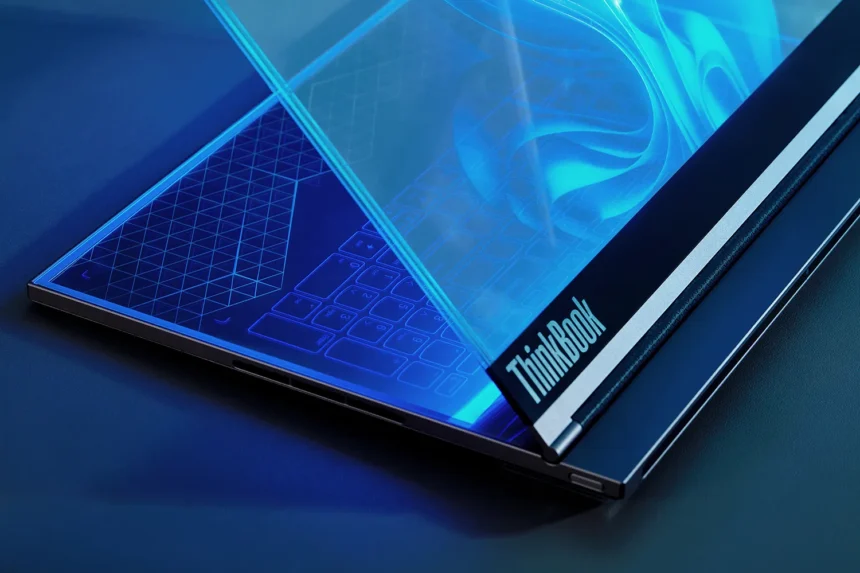The Mobile World Congress (MWC) is always filled with cutting-edge tech, but this year Lenovo unveiled a product that breaks down the traditional barriers of laptop design. The company showcased a proof-of-concept device – the world’s first laptop with a massive 17.3-inch transparent display, the prototype offers a glimpse into the future of computing, where the boundaries between the physical and digital worlds merge.
A Design Like Nothing Before
The Lenovo ThinkBook Transparent Display Laptop Concept immediately captures the imagination. Constructed primarily of glass, it appears like a transparent slab that just happens to have a keyboard and trackpad attached. The large 17.3-inch display utilizes micro-LED technology, offering approximately 55% transparency and a 720p resolution. This groundbreaking approach to laptop design opens up entirely new possibilities for creativity, collaboration, and interaction with technology. The transparent display also holds immense potential in collaborative settings, encouraging new and immersive ways of sharing and interacting with digital content.
Furthermore, the ultra-high brightness of the micro-LED display suggests exceptional outdoor performance. This could pave the way for a truly versatile computing experience, blurring the lines between indoor and outdoor work environments.
Lenovo is not the first to experiment with transparent display technology. Samsung and LG have previously demonstrated prototype versions. However, Lenovo’s commitment to a full-fledged laptop concept signals that the company is actively exploring the practical applications of this mesmerizing technology.

The future viability of transparent laptops remains uncertain. It could prove to be a niche technology with specific use cases, or it might foreshadow a significant shift in how we perceive and interact with our computing devices.



